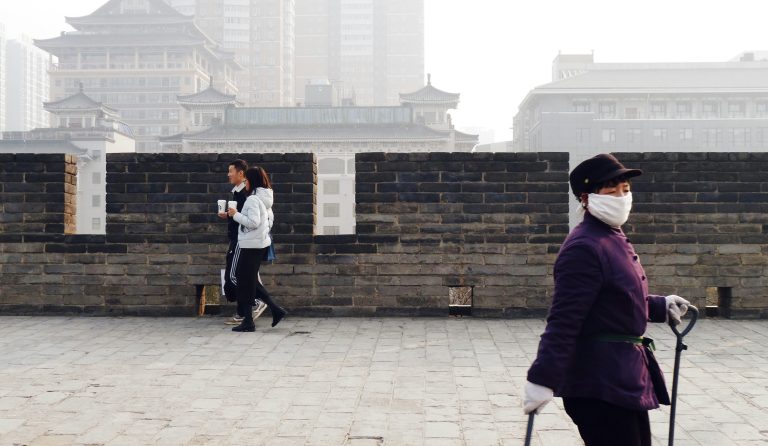What is the Church?, Part 3: One-and-Many Humanity, Re-Created Through Redemption
The church is diverse and yet one, the image and form of God. Genesis 1:26 says: “Then God said, ‘Let us make man in our image, after our likeness. And let them have dominion over the fish of the sea and over the birds of the heavens and over the livestock and over all the earth and over every creeping thing that creeps on the earth.’” In this passage, the phrase “God said” is different from previous uses of the phrase. Earlier his words are imperative, commands that must be fulfilled. This is a self-dialogue within the triune God and is revelatory in nature.
God writes down his plan in this sentence because he wants us to know his will. This is not a creational command, but an eschatological revelation. When God says, “Let us make man in our image, after our likeness,” the image and likeness belongs to all three persons of the Trinity. Humanity is the image and likeness of the one-and-three God.
Second, God said man is to have dominion over all things: the fish of the sea, the birds of the heavens, the livestock, all the earth, and every creeping thing that creeps on the earth. God’s plan is not just to make an image of the one-and-three God, but to fill the earth. Only then can humans have dominion over the fish in the sea and the birds in heaven. The will revealed by the triune God is to create the one-and-many humanity. God is one-and-three; humanity is one-and-many. This one-and-many humanity collectively reflects the image of the one-and-three God, and in them forms a collective humanity. This collectivity means they have one will, one Lord, one faith, one baptism, and they worship one God. This will is to fulfill the mission the Lord has given to them. Humanity is also to fulfill the mission to multiply and fill the earth and continue creation.
Humanity fulfills the commands of God and reflects the image of God. The love and worship humanity gives God is a natural characteristic of image-bearers. Their love for one another also reflects the love within the triune God. The image and likeness is an individual person, but it is also a collective humanity. The will of God is to create a whole humanity.
God revealed his will in verse 26. In verse 27 he created male and female, commanding them to multiply and fill the earth. This is the implication and interpretation of verse 26. Chapter two shows us concretely how to have dominion by managing and guarding. Guarding the garden is the responsibility of a priest. The passage also shows how to continue to multiply and fill the earth.
Verse 26 mentions that God made man after his own image, after his likeness. Was God’s purpose completed here? Was it completed at the end of chapter 1? The end of chapter 2? The end of chapter 3? It was never completed. Then, Adam and Eve fell and plunged humanity into the massive problem of sin. Genesis 3 ended the wonderful plan of creation that started in Genesis 1:26. The creation of God’s images was not completed. The end of Genesis 3 leaves humanity one big question: can the creation of humanity be completed?
The entire Bible is in suspense because of what happened between Genesis 1:26 and chapters 2 and 3. God’s answer is that, through redemption and regeneration in Christ Jesus, Genesis 1:26 will be fulfilled. “If anyone is in Christ, he is a new creation. The old has passed away; behold, the new has come” (2 Corinthians 5:17).
“What will happen to me? How can I be saved?” are good questions. But a better question from the perspective of the Bible is: “How can the creative will and plan of God (the plan to create a perfect, one-and-many humanity in God’s image) be fulfilled after the fall of man?” The entire process of justification in Christ, sanctification, and adoption is not only to grant salvation; this salvation includes sanctification, glorification, and re-creation.
Eventually, God will fulfill the will he revealed in Genesis 1:26. What is the form of that fulfillment? Let us turn to Revelation 21-22. Genesis 1-2 reveal God’s initial plan for us; in Genesis 3, his plan was not fulfilled, but was stalled by the fall of man. Revelation 21-22 shows the final scene of God’s redemption and re-creation: “Then I saw a new heaven and a new earth, for the first heaven and the first earth had passed away, and the sea was no more. And I saw the holy city, new Jerusalem, coming down out of heaven from God, prepared as a bride adorned for her husband” (Revelation 21:1-2).
Never miss a story
Genesis 1 says, “In the beginning God created the heavens and the earth.” Heaven is the dwelling place of God. Created land was given to man, but God is present in his creation, in heaven. Even today, after his resurrection, Christ is at the right hand of God the Father in heaven. Heaven and earth are created realities, and the heavenly court belongs to God. He is revealing himself from there, and he reigns from there. Today, Christ sits at the right hand of God the Father, where he reigns. At the end of history, the heaven in which God reigns, the holy city of Jerusalem, and the holy saints and holy Lamb come down from heaven to earth. This forms the new heavens and the new earth. In its midst is the holy city, which is the ending and fulfillment of creation at the end of history.
In Revelation 21:2, Jerusalem is prepared as a bride adorned for her husband. Then we come to 21:9-10: “Then came one of the seven angels who had the seven bowls full of the seven last plagues and spoke to me, saying, ‘Come, I will show you the Bride, the wife of the Lamb.’ And he carried me away in the Spirit to a great, high mountain, and showed me the holy city Jerusalem coming down out of heaven from God…”
There are two cities: one is Babylon, the harlot who belongs to destruction; the other is the holy city, Jerusalem, which belongs to God forever. Jerusalem will have the glory of God, its radiance like various gems. There are 12 gates, with 12 angels, and on the gates the names of the 12 tribes; there are also the 12 names of the apostles of the Lamb on the 12 foundations. There are all kinds of jewels, such as topaz, in the city. These are the jewels that were set in the ephod of the High Priest and bear the 12 names of the tribes of Israel. At the end of history, the holy city of Jerusalem is a symbol of humanity.
At the fork of the river is the city that belongs to God. Revelation 22:19 reads: “And if anyone takes away from the words of the book of this prophecy, God will take away his share in the tree of life and in the holy city, which are described in this book.” The passage speaks of the tree of life, the removal of one’s share, the holy city, the book, and so on. This points to the final fulfillment of God’s creation according to his image and his likeness. This is the one-and-many humanity, perfectly made in the image and likeness of God, which God has re-created through the process of redemption. Humanity is manifested by a holy city as a symbol, which shows it is a city of mankind. This one-and-many humanity is the eschatological perfect image and likeness of God. This one-and-many humanity, the Bride of Christ, is the church.
Read the whole series below:
A Historical Review
Synopsis: The current round of religious persecution in China is fundamentally an issue of ultimate allegiances. “The government used to be laissez-faire, but now they need to hear everyone say: ‘I love you.’”
Synopsis: Modern day China is the result of a clash between cultures. Before its engagement with the West, China viewed the world according to two categories – its kingdom and the barbarians outside.
Synopsis: A discussion of the authority structures that exist in China due to the long legacy of Confucianism. Authority belongs to the emperor as given by heaven and total loyalty to superiors is necessary for the Chinese system to function.
Synopsis: A two-millennia old system of governance does not easily change overnight. “Yuan realized the universal and interconnected Chinese system could not be transformed into a republican or parliamentary system simply by changing it on paper. In a public discussion in America, he said: “If we do not even have citizens, how can we have a republican system?”
Synopsis: In the past, while China was busy getting rich, the government had confidence in its full legitimacy to rule and there were fewer questions of loyalty. But now, in this time of reconstruction, they ask: “Do you love me? If you do, you must raise the national flag. If you love me, you will register [your churches].
What is the Church?
Synopsis: When a culture desperately needs the message of the cross (not the prosperity gospel, but the central message of Christ Jesus’ death and resurrection) and it is given, the gospel not only crosses and transcends cultural boundaries, it produces long-lasting fruit.
Synopsis: Chinese pastors are asking the question, “What is the church?” The answer is crucial for determining their response to the government. As they try to define their theology of the church, these pastors are going beyond considering its attributes, to trying to understand the very nature of the church.
Synopsis: In the light of Genesis 3, the most important question to ask is not, “How can we be saved,” but rather, “How can the creative will and plan of God to make a perfect humanity be fulfilled?” The answer is the one-and-many humanity God is calling to himself to make up the church.
Synopsis: Today’s church is the construction site for the new creation God is building and which will be revealed in the final day.
Synopsis: The persecution and challenges the Chinese house church currently faces are no different from those faced by the early church in Acts. The authorities of this world always challenge the church with the same question: “Who do you love?” The extent to which the church’s response to this question is informed by its union with Christ will determine its faithfulness to the Lord in the face of persecution.
Synopsis: Moving forward, we must ask: are we protecting ourselves, or are we doing it for the gospel? A lived-out ecclesiology will inevitably encounter suffering.
Translation provided by Moses, Jane, Ryan, and the China Partnership translation team.
































